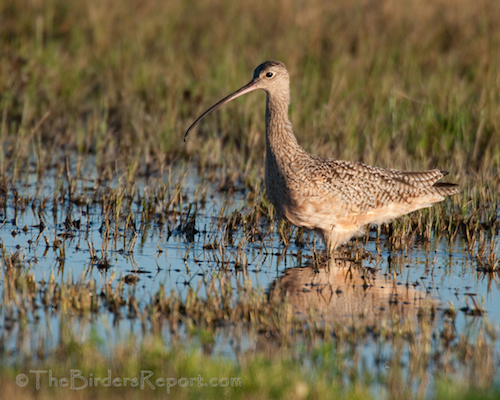 Long-billed Curlew (Numenius americanus) photo by Larry Jordan
Long-billed Curlew (Numenius americanus) photo by Larry Jordan
Make sure you check out my latest West Coast Beat Writer post over at 10000 Birds! It’s a photo essay of the Long-billed Curlew!
 Long-billed Curlew (Numenius americanus) photo by Larry Jordan
Long-billed Curlew (Numenius americanus) photo by Larry Jordan
Make sure you check out my latest West Coast Beat Writer post over at 10000 Birds! It’s a photo essay of the Long-billed Curlew!
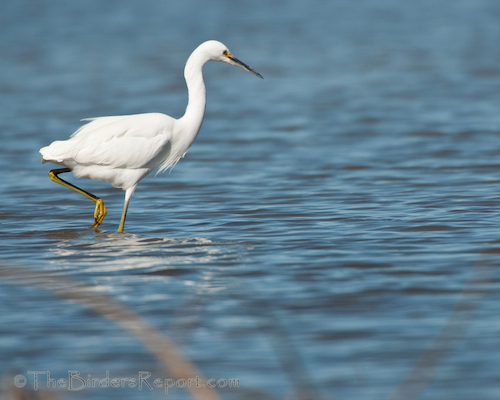 Snowy Egret (Egretta thula) photos by Larry Jordan
Snowy Egret (Egretta thula) photos by Larry Jordan
The Snowy Egret (Egretta thula) takes a wide range of prey items including earthworms, annelid worms, aquatic and terrestrial insects, crabs, shrimp, prawns, crayfish, other crustaceans, snails, freshwater and marine fish, frogs, toads, snakes and lizards. Even though they consume this variety of prey items, their diet consists predominately of fish. Click on photos for full sized images.
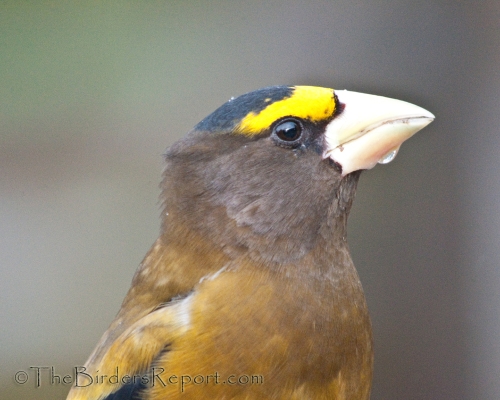 Evening Grosbeak (Coccothraustes vespertinus) Male photos by Larry Jordan
Evening Grosbeak (Coccothraustes vespertinus) Male photos by Larry Jordan
It’s official, the American Birding Association (ABA) announced their Bird of the Year for 2012. It is the Evening Grosbeak (Coccothraustes vespertinus)! I was lucky enough to have several of these beauties grace my yard just about a year ago. The portrait above is one of the males from last March before reaching full breeding plumage.
Personally, I think this is a great choice for several reasons. Number one is that they are gorgeous birds with bright colors. They are a rather large finch that should be easily identifiable. And three, they are gregarious and visit bird feeders!
Here are a couple of photos of the female and male in their breeding plumage when they returned to visit my yard at the end of May last year. Click on photos for full sized images.
Just a couple of the things that I think are great about the American Birding Association (ABA) are its commitment to birding ethics and its continued efforts to introduce young people to the joy of birding.
The ABA code of ethics begins “Everyone who enjoys birds and birding must always respect wildlife, its environment, and the rights of others. In any conflict of interest between birds and birders, the welfare of the birds and their environment comes first.” To me this says everything about this organization. Ethical behavior is especially important in bird conservation and is one of my critical values for joining any organization.
Also, in my opinion, the promotion of youth birders is essential to the survival of our birding passion and the American Birding Association succeeds at this endeavor with all kinds of activities for our young friends.
For interesting facts about Evening Grosbeaks and a list of activities, please visit the 2012 Bird of the Year website.
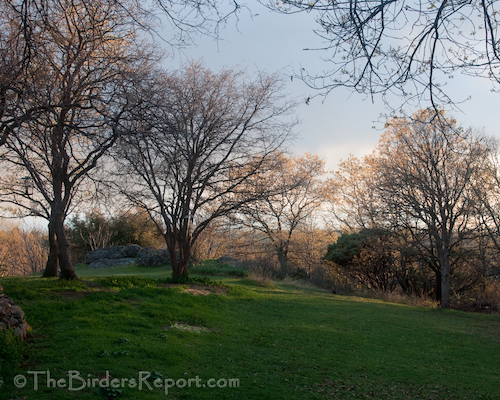 My Spring Yard (Click on photos for full sized images)
My Spring Yard (Click on photos for full sized images)
There are two equinoxes every year, in March and September, when the sun shines directly on the equator and the length of day and night is nearly equal. The seasons are opposite on either side of the equator, so the equinox in March is also known as the “spring or vernal equinox” in the northern hemisphere and the “fall or autumnal equinox” in the southern hemisphere.
Today marks the first full day of Spring here in Northern California and the trees are leafing out making it once again more difficult to locate and photograph birds.
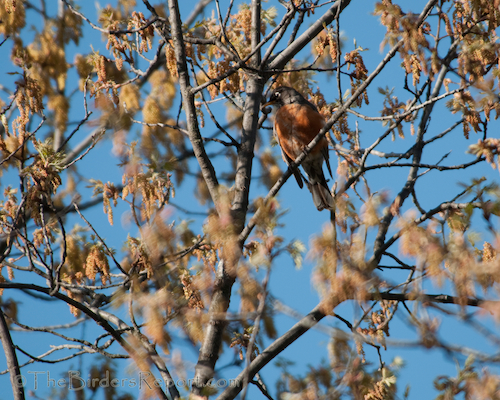 American Robin (Turdus migratorius) photos by Larry Jordan
American Robin (Turdus migratorius) photos by Larry Jordan
My new Pygmy Goat kids are certainly loving it though 😉
Social Media Connect